5 Ways You Can Use Gravity Forms with OpenAI… Right Now!
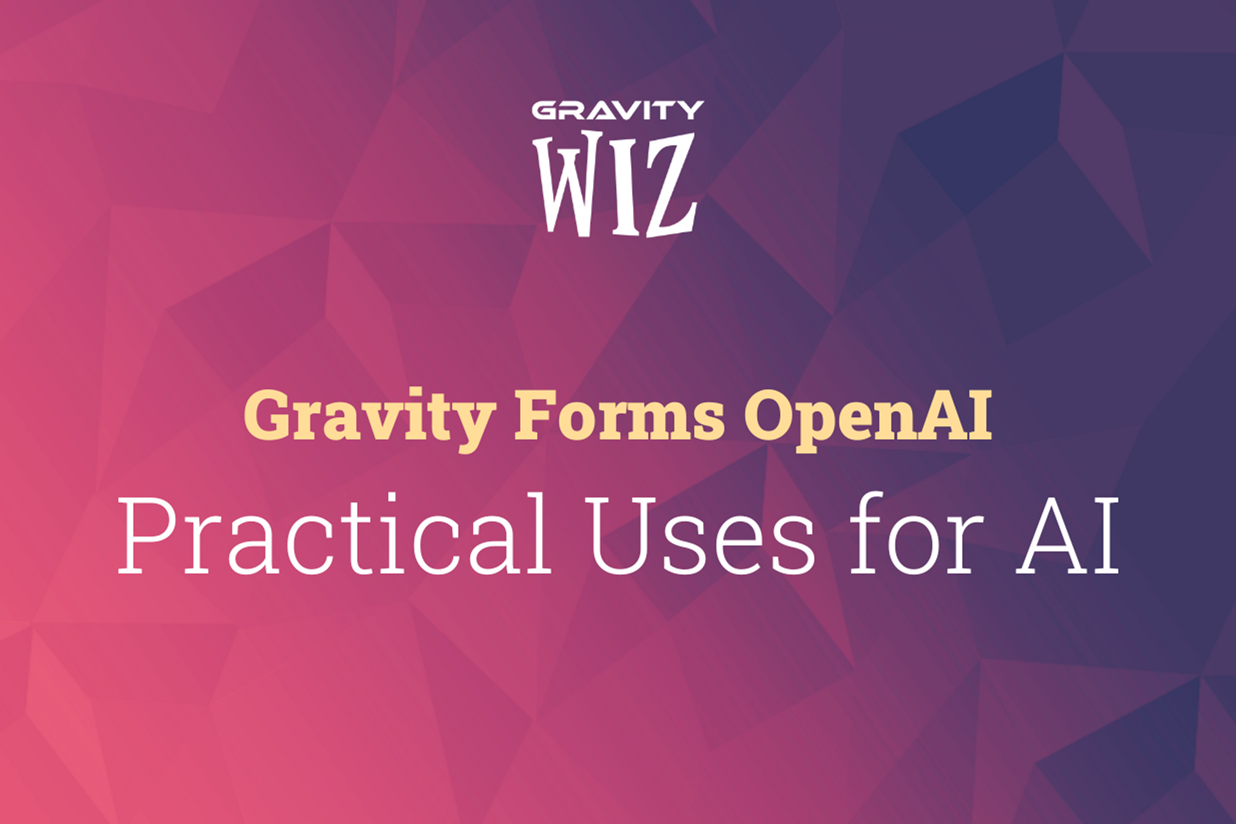
Written by the Editorial team at Gravity Wiz…
“AI is going to change your entire workflow overnight and it’s coming for your job!”
Heard it before? You can probably relate to the hype in recent months. And yeah, AI is moving fast. WordPress will be no exception. We’ve already seen established plugin developers open the door to AI friendly features.
The question is, how can we actually use AI right now? And how can it be leveraged inside a plugin like Gravity Forms?
At Gravity Wiz, we released Gravity Forms OpenAI, a free plugin with this premise in mind. It provides the capabilities and functionality you’ll find using tools like ChatGPT, but from inside Gravity Forms.
Instead of riding the hype, let’s discuss what’s possible now – real ways you can leverage AI to optimize your workflow and provide more value for your customers. And to cover our bases, we’ll focus on use cases ranging from support, to marketing, to website administration.
This article is part one in a series. We’ll be tackling each use case below in more length with step-by-step tutorials, coming soon!
Ready to explore what’s possible?
Sentiment Analysis: Understand the Sentiment of Support Tickets in Large Numbers
One great way to incorporate AI into your business workflow right now: sentiment analysis.
Let’s say you have a support form and want to identify the sentiment — the overall vibe — of each support request.
Among other things, this allows you to:
- Identify negative tickets and serious issues more quickly.
- Take care to be more patient with negative customers.
- See support sentiment trends and analyze that data with other variables.
For example, did you recently release a product? Is this product creating the majority of your negative support conversations? Inversely, what kinds of requests are the most positive? How can we get more of this?!
All support forms can include a hidden field that checks sentiment of support responses. Or, you could create a form that lets you input multiple tickets at a time and analyze them in larger quantities. Once there is an overall sentiment gathered on a large number of tickets, you can begin to sort and analyze.
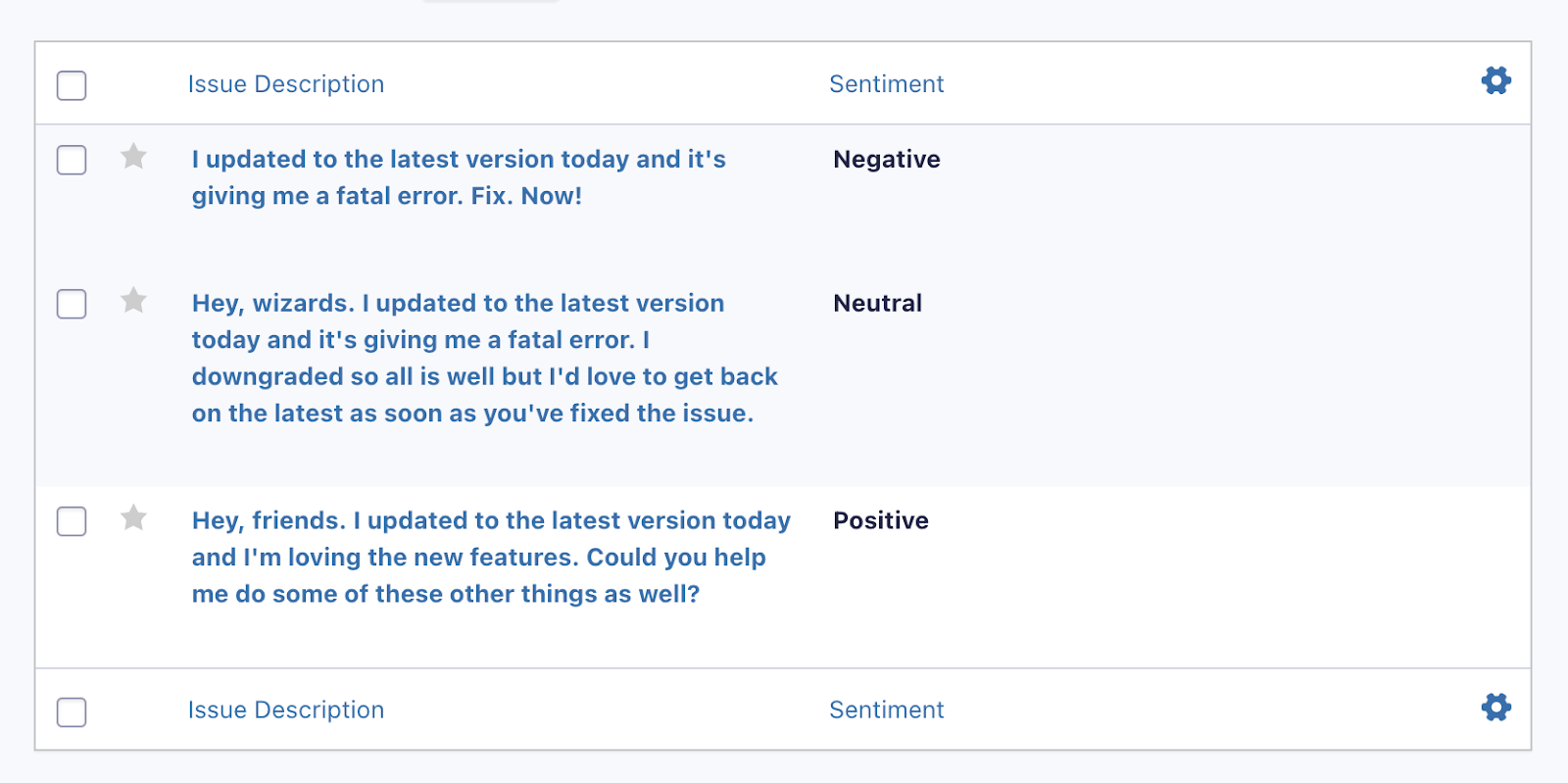
Once you’ve taken it this far, you can take it a step further by doing things like integrating the Gravity Forms Help Scout Add-On to automatically tag tickets.
Moderation: Flag and Block Unwanted Content Automatically
AI can help with moderation and any process involving filtering content and/or notifying an administrator for review.
Different categories, such as hate speech, threats, and sexually explicit content can be blocked and scored by OpenAI.
Example: you’re hosting a webinar and presenters can opt in to receive anonymous feedback. You may then want to prevent hosts from receiving inappropriate content.
OpenAI provides a moderation endpoint that allows you to intercept or flag content that does not comply with OpenAI’s usage policies.
By integrating the Gravity Forms OpenAI plugin, you make it possible to take advantage of this moderation and notification system within any form you use.
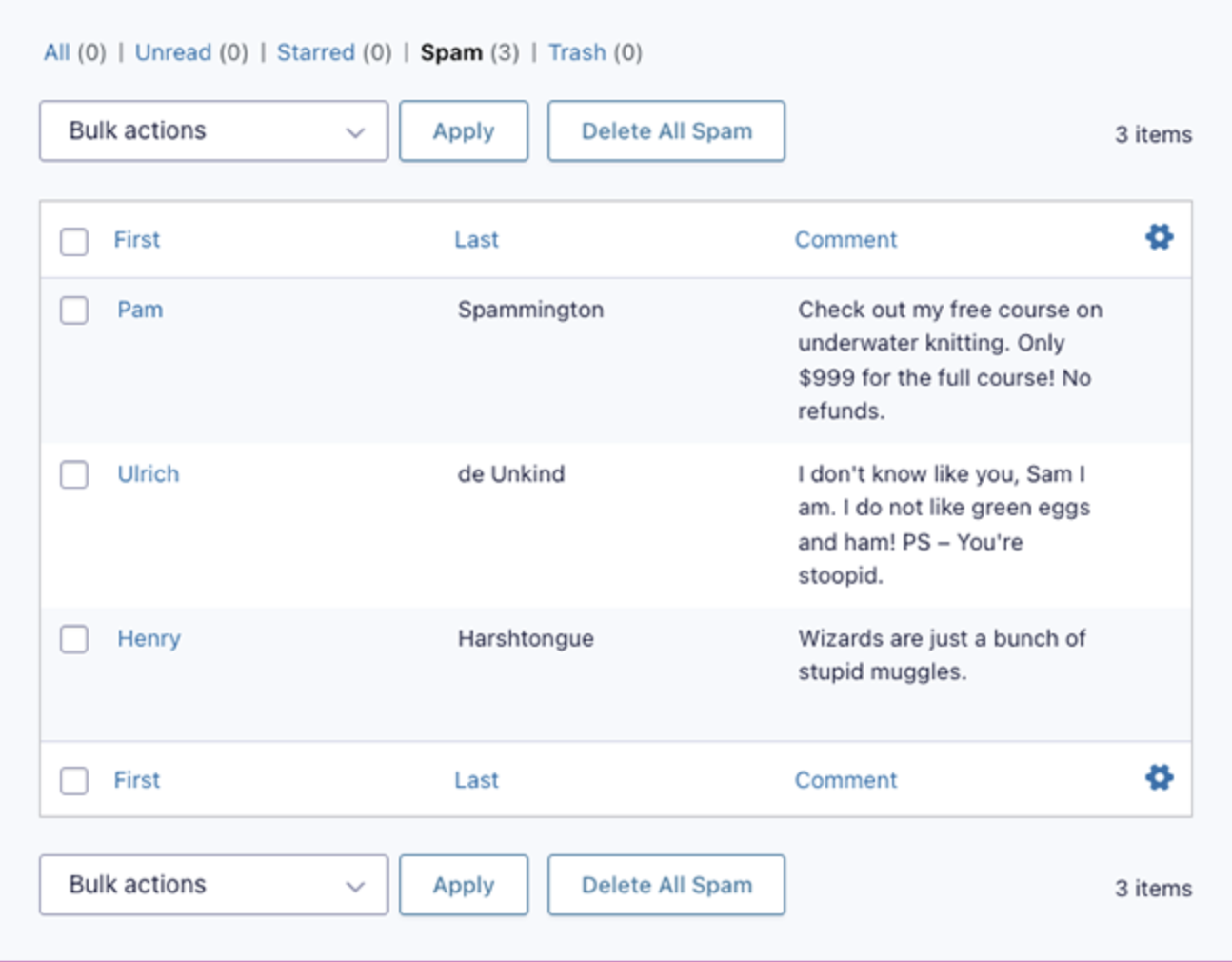
Pro tip: utilize the free Gravity Forms Spam Notification plugin to get email notifications when an entry is marked as spam.
Interact with AI Generated Content in Real Time on Your Forms
So far, common applications for AI have involved prompting a model for a given output, and then taking the generated text and using it elsewhere. Where things get exciting: interacting with that generated content, in real time, inside your forms.
Let’s say you use Gravity Forms for an internal content review process. Content writers submit their content through Gravity Forms, and you generate summaries of this content for readers automatically. You may want to auto-generate a summary/excerpt of their writing, but ensure they can edit this summary before it goes live.
By enabling Live Merge Tags, you can use the AI output anywhere else within Gravity Forms. The live result can be output in field labels (think dropdowns, HTML fields, Checkbox fields, etc), as field values, and in confirmations, notifications, or anywhere else.
Here’s an example where we’re using Live Merge Tags in a Paragraph field to generate live content summaries that the author can then finalize before submitting.
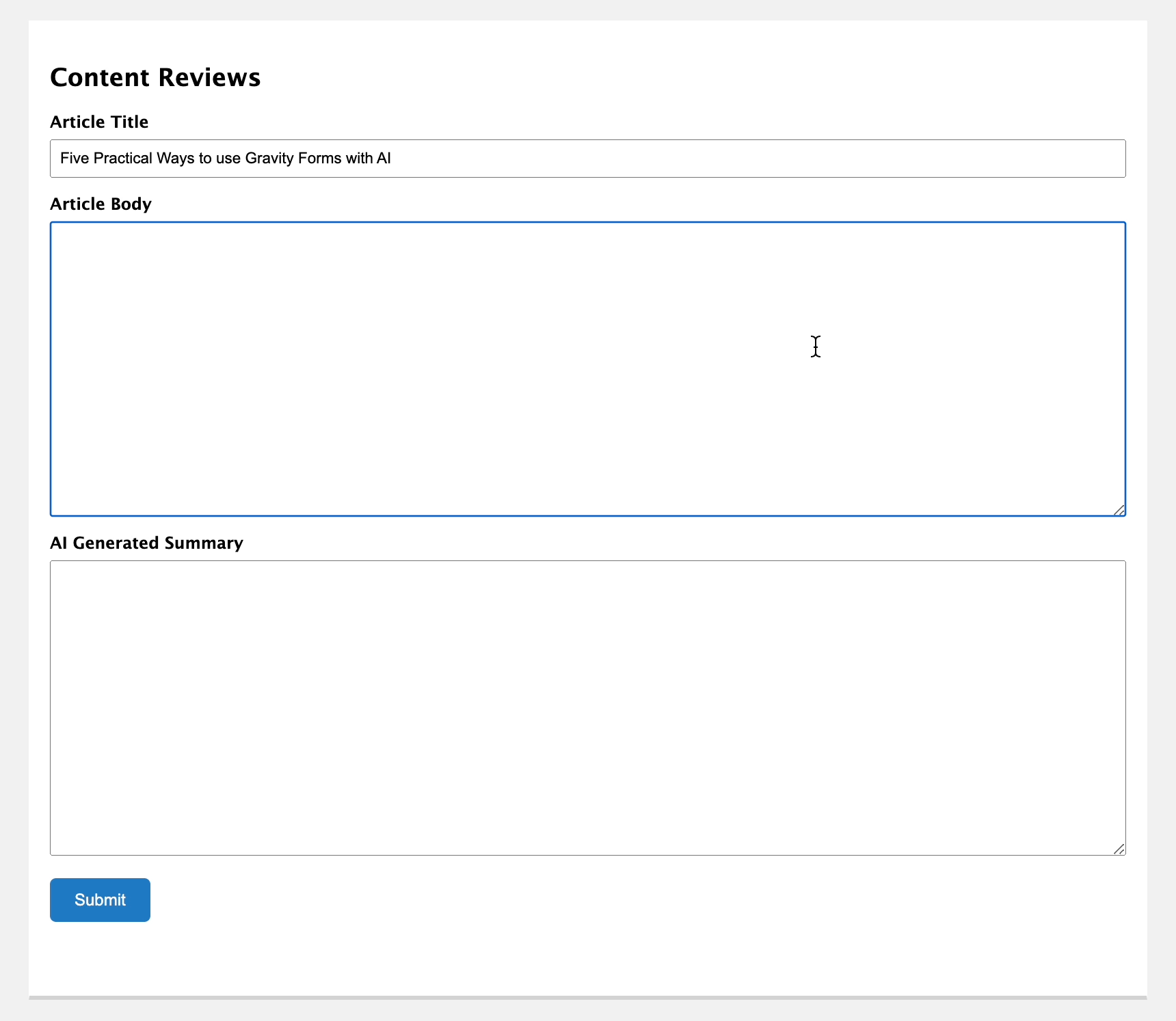
Where else can you take this?
- Use Gravity Forms to create content submission forms as part of your approval process.
- Get content suggestions in large quantities. Optimize for tone, readability, and more.
- Run SEO analysis based on target keywords and other content goals.
Using AI, you can do this relatively quickly, and in large quantities.
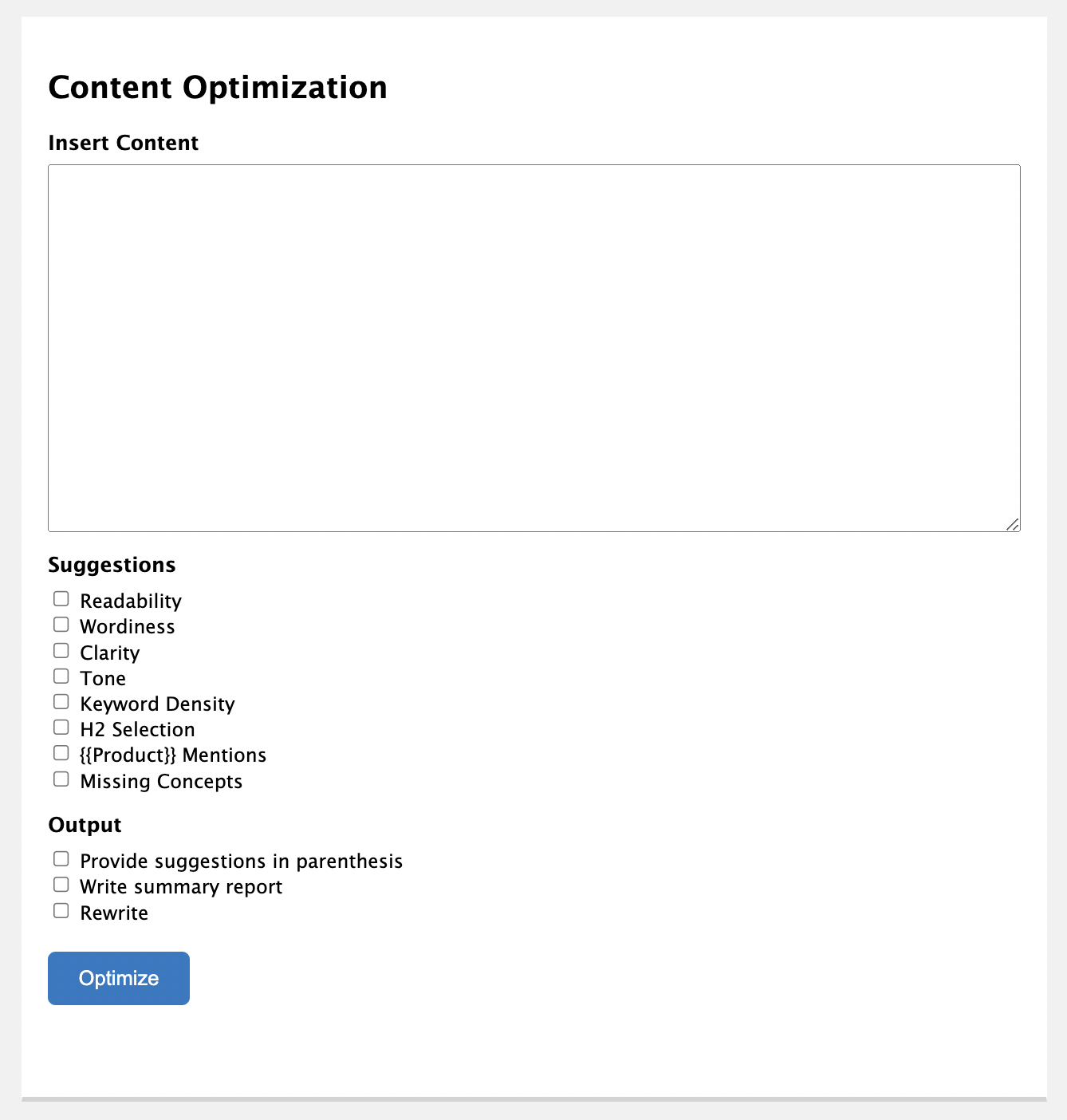
Kickstart Your Sales Process
If you are using Gravity Forms for lead generation or contact form submissions, AI can be helpful for getting a head start on your sales process.
For example, you can automate the research process on companies or products. Get company background, product competitors, target markets, relevant content, and areas for improvement. Summarize these results for your own lead report.
By incorporating a Company Name or Website field, it’s easy to create prompts that output everything you’ll need to know and then send this generated output in email notifications, internal messages, or Post content.
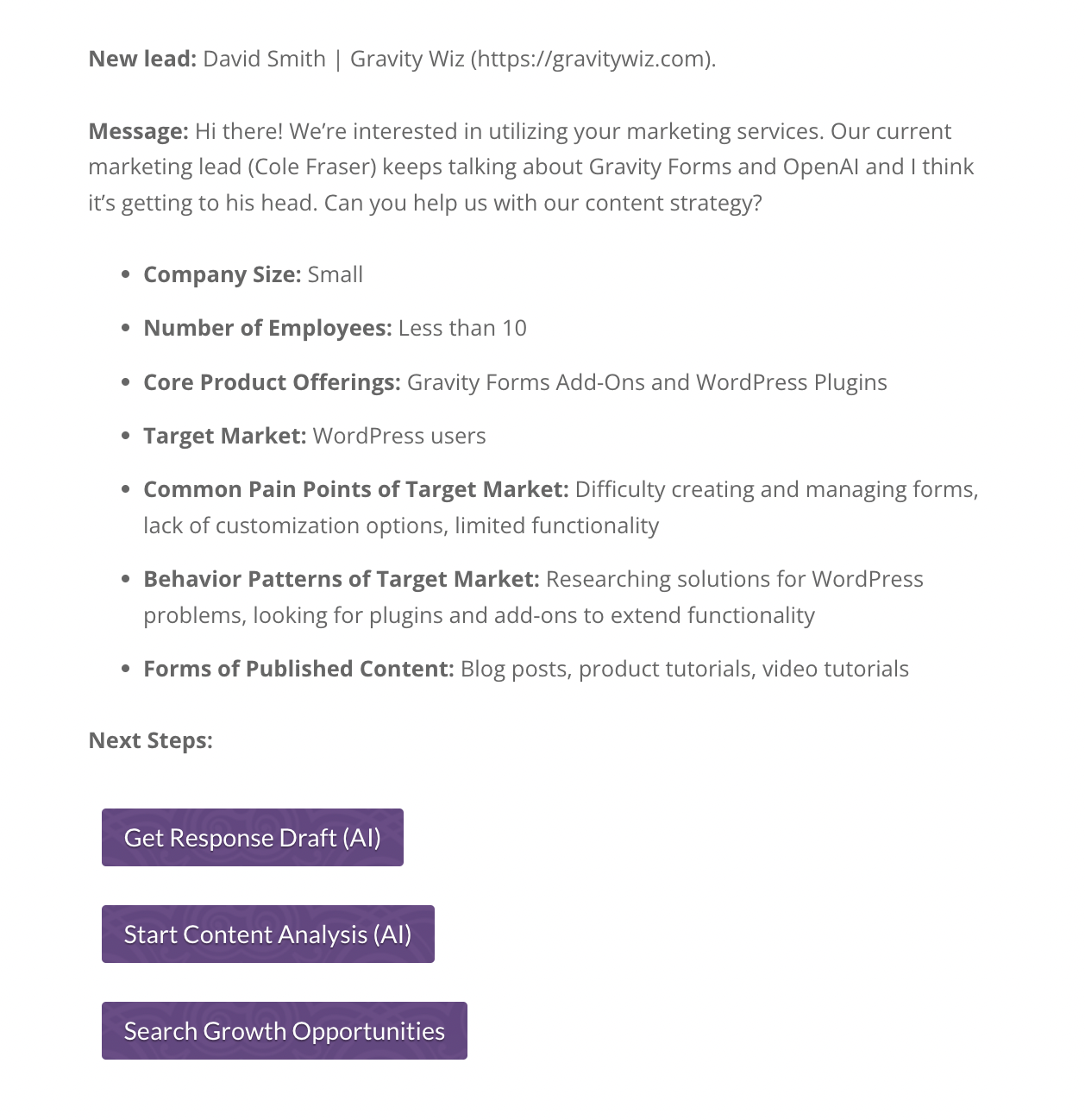
Idea Generation
One roadblock with using AI platforms like ChatGPT in a more customized business context is that prompting can be a fine art. Without knowing how to do so correctly, it can be difficult to get actionable results.
By using Gravity Forms with OpenAI, you can create pre-defined constraints using Gravity Forms fields. This makes it far easier to control for the output.
A good example of this is idea generation: use Gravity Forms to submit topics or keywords, and specify exactly what you’re looking for using Gravity Forms fields.
Imagine you’re building an outline generator. Using Gravity Forms fields, specify what you’re looking for within the outline (keywords, target length, products, funnel stage). Instead of an overwhelming list of options, these limitations become your best friend.
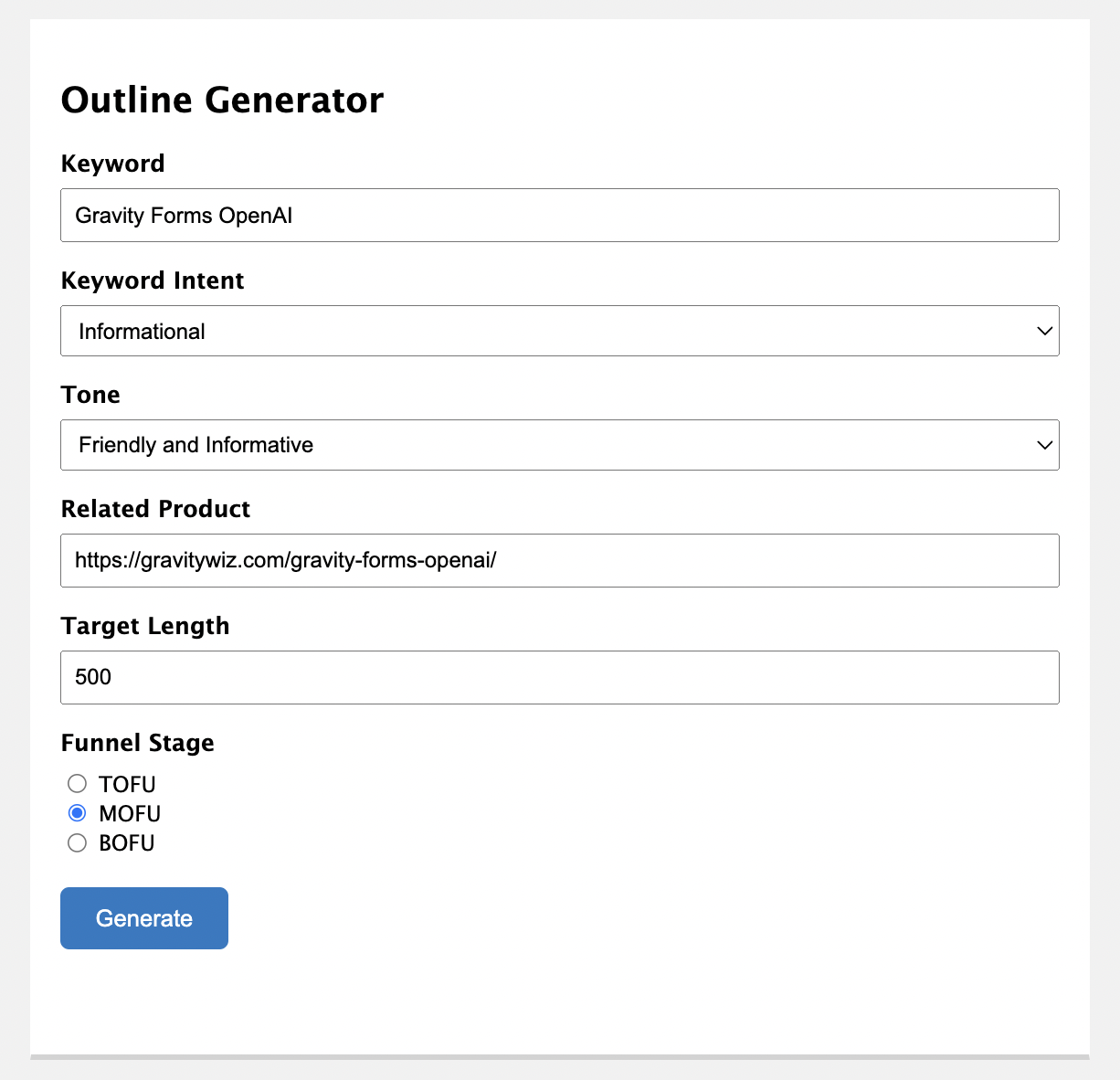
Another example on the topic of idea generation could be social media headlines. Just your content, specify a platform, and generate ideas. Using Gravity Forms, do this in large quantities.
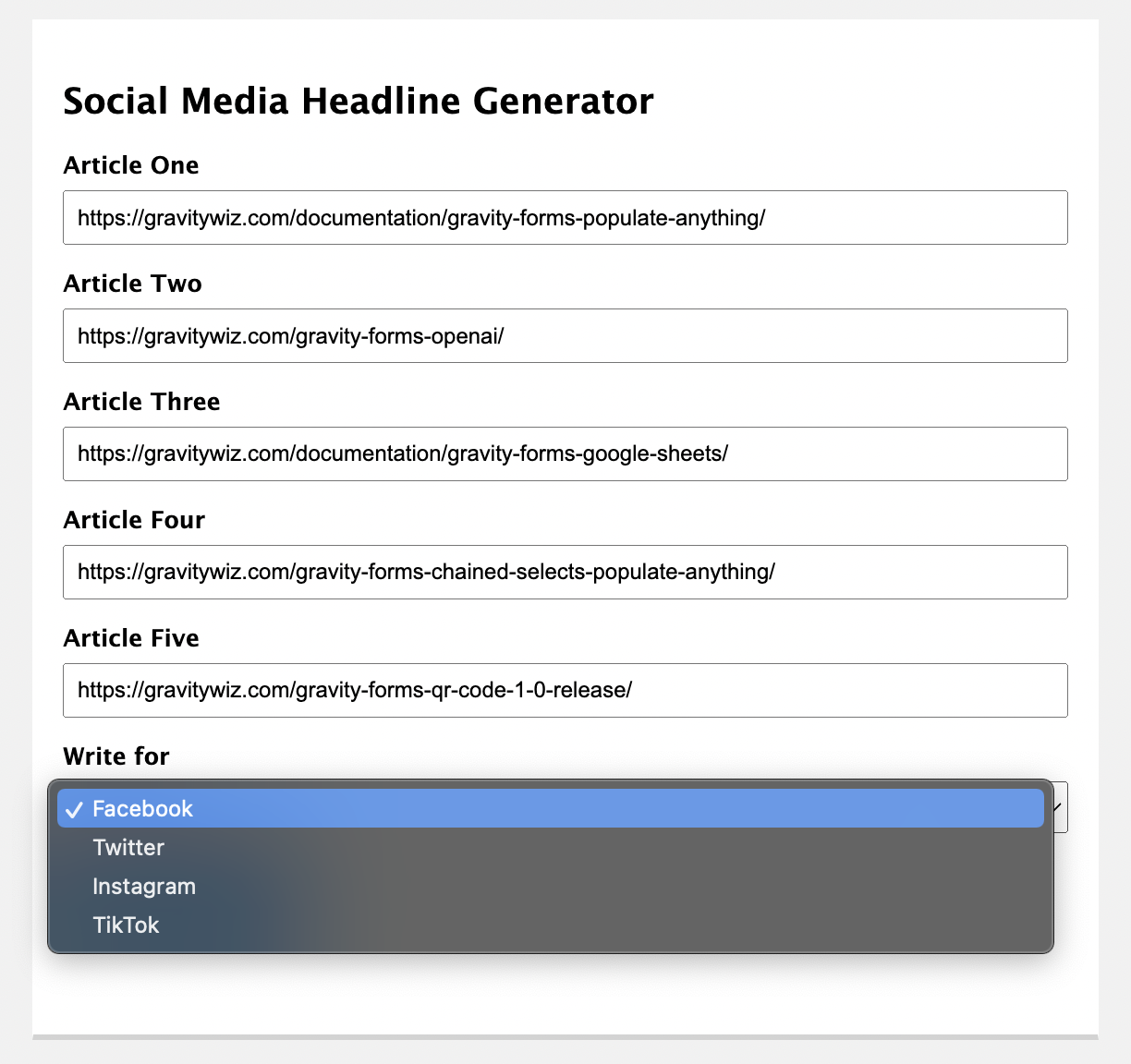
Whether social media headlines, ad copy, competitor research, or any other type of generated content, Gravity Forms makes it easy to send this data elsewhere and integrate it with your existing WordPress workflow. For example, using Gravity Forms Google Sheets, you can send this content to Google Sheets automatically (and, optionally, repopulate it back into Gravity Forms field choices and values using Populate Anything!).
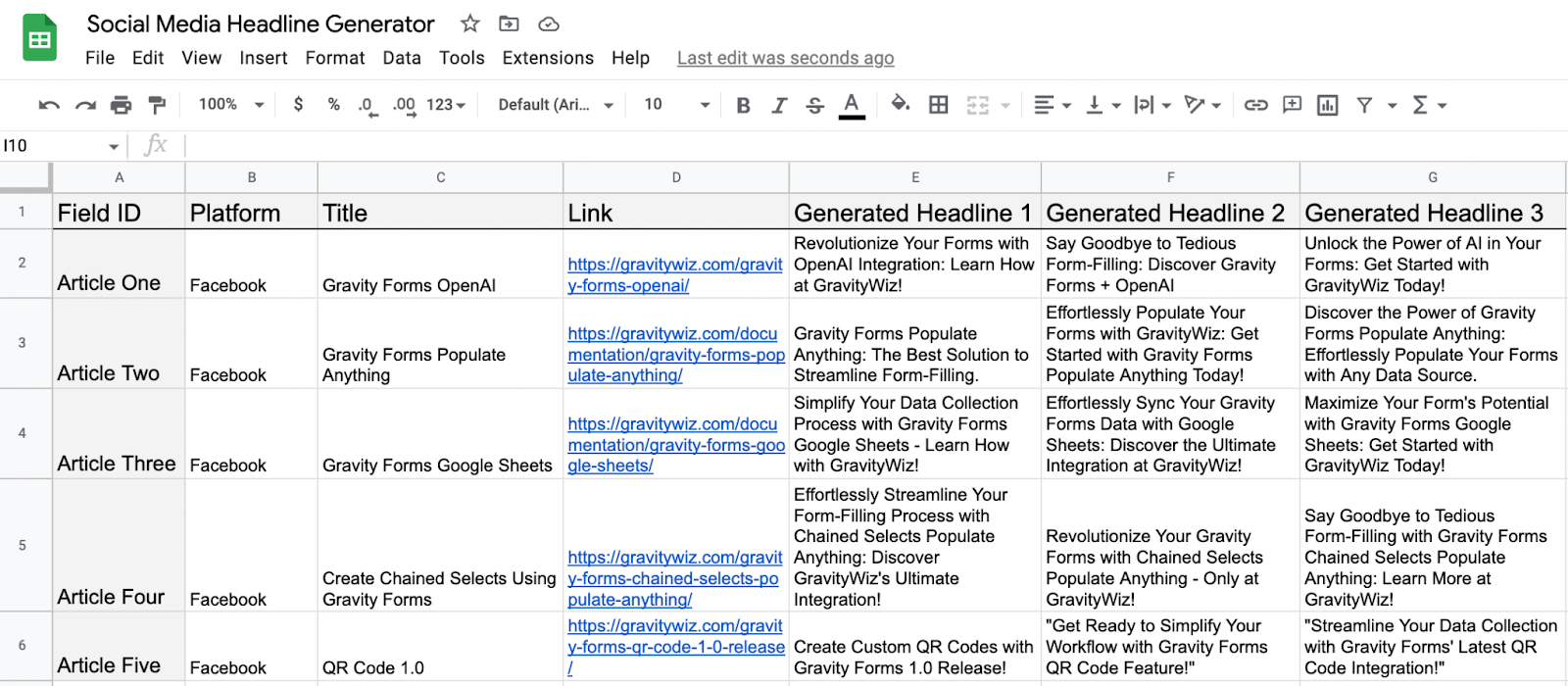
Gravity Forms OpenAI: Real Examples
We’ve seen Gravity Forms users venture into fun, exploratory territory with Gravity Forms OpenAI.
- AutoClassmate.io is using the Gravity Forms OpenAI plugin to generate dynamic teaching lessons and activities for students.
- Storybooker.AI uses Gravity Forms OpenAI to help write stories and build on ideas (using very few prompts!).
If you’re building something with Gravity Forms OpenAI, we’d love to see it!
Why Gravity Forms?
You’ve seen a lot about what’s possible with AI. But you may still be wondering — why use Gravity Forms to do this? Why WordPress? Why not simply copy and paste output via ChatGPT?
Using Gravity Forms:
- You get all of the features and customizability of Gravity Forms and WordPress, configured as you desire, with AI. That’s a lot more than just access to ChatGPT!
- You can integrate AI into your existing workflow right now — and output generative content within WordPress, instead of a new tech stack built from scratch.
- Your data stays with you — including client information, project details, and any other sensitive information.
- You can leverage AI within a collaborative context, whether your team, clients, or other project stakeholders.
- You get full control over the output. Your rules, pre-defined prompts, custom fields, etc. Leads to creating customized tools that work for you.
- You can develop tools for the long term and enjoy economies of scale.
We’re excited to explore each of the above use cases in more depth in coming articles in this series. For now, feel free to download and play with Gravity Forms OpenAI. It supports GPT 4, integrates with Gravity Flow, and it’s completely free.
